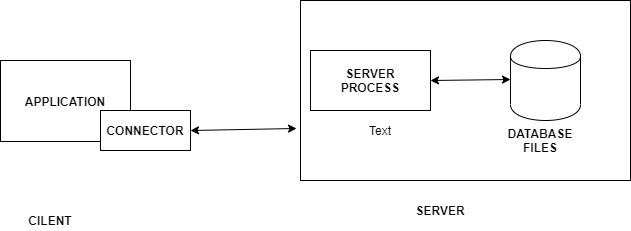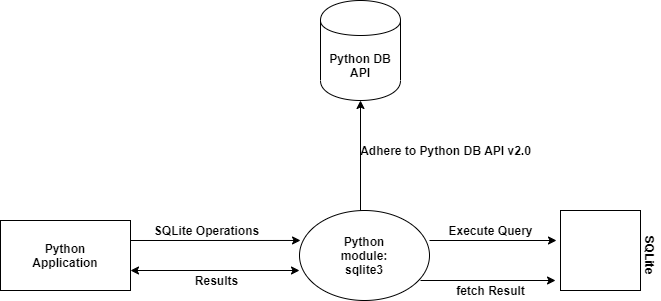Introduction to SQLite in Python
Last Updated :
05 Apr, 2022
Databases offer numerous functionalities by which one can manage large amounts of information easily over the web and high-volume data input and output over a typical file such as a text file. SQL is a query language and is very popular in databases. Many websites use MySQL. SQLite is a “light” version that works over syntax very much similar to SQL. SQLite is a self-contained, high-reliability, embedded, full-featured, public-domain, SQL database engine. It is the most used database engine on the world wide web. Python has a library to access SQLite databases, called sqlite3, intended for working with this database which has been included with Python package since version 2.5. SQLite has the following features.
- Serverless
- Self-Contained
- Zero-Configuration
- Transactional
- Single-Database
Serverless
Generally, an RDBMS such as MySQL, PostgreSQL, etc., needs a separate server process to operate. The applications that want to access the database server use TCP/IP protocol to send and receive requests and it is called client/server architecture.  SQLite does not require a server to run. SQLite database is joined with the application that accesses the database. SQLite database read and write directly from the database files stored on disk and applications interact with that SQLite database.
SQLite does not require a server to run. SQLite database is joined with the application that accesses the database. SQLite database read and write directly from the database files stored on disk and applications interact with that SQLite database. 
Self-Contained
SQLite is self-contained means it does not need any external dependencies like an operating system or external library. This feature of SQLite help especially in embedded devices like iPhones, Android phones, game consoles, handheld media players, etc. SQLite is developed using ANSI-C. The source code is available as a big sqlite3.c and its header file sqlite3.h. If users want to develop an application that uses SQLite, users just need to drop these files into your project and compile it with your code.
Zero-Configuration
SQLite is zero-configuration means no setup or administration needed. Because of the serverless architecture, you don’t need to “install” SQLite before using it. There is no server process that needs to be configured, started, and stopped.
Transactional
SQLite is Transactional means they are atomic, consistent, isolated, and durable(ACID). All transactions in SQLite are fully ACID-compliant. In other words, all changes within a transaction take place completely or not at all even when an unexpected situation like application crash, power failure, or operating system crash occurs.
Single-Database
SQLite is a single database that means it allows a single database connection to access multiple database files simultaneously. These features bring many nice features like joining tables in different databases or copying data between databases in a single command. SQLite also uses dynamic types for tables. It means you can store any value in any column, regardless of the data type.
Understanding of SQLite Module Working in Python
Python SQLite is used to demonstrate how to develop Python database applications with the SQLite database. You will learn how to perform SQLite database operations from Python. SQLite comes built-in with most of the computers and mobile devices and browsers. Python’s official sqlite3 module helps us to work with the SQLite database.  In this diagram, the Python sqlite3 module adheres to Python Database API Specification v2.0 (PEP 249). PEP 249 provides a SQL interface that has been designed to encourage and maintain the similarity between the Python modules that are used to access databases.
In this diagram, the Python sqlite3 module adheres to Python Database API Specification v2.0 (PEP 249). PEP 249 provides a SQL interface that has been designed to encourage and maintain the similarity between the Python modules that are used to access databases.
Like Article
Suggest improvement
Share your thoughts in the comments
Please Login to comment...